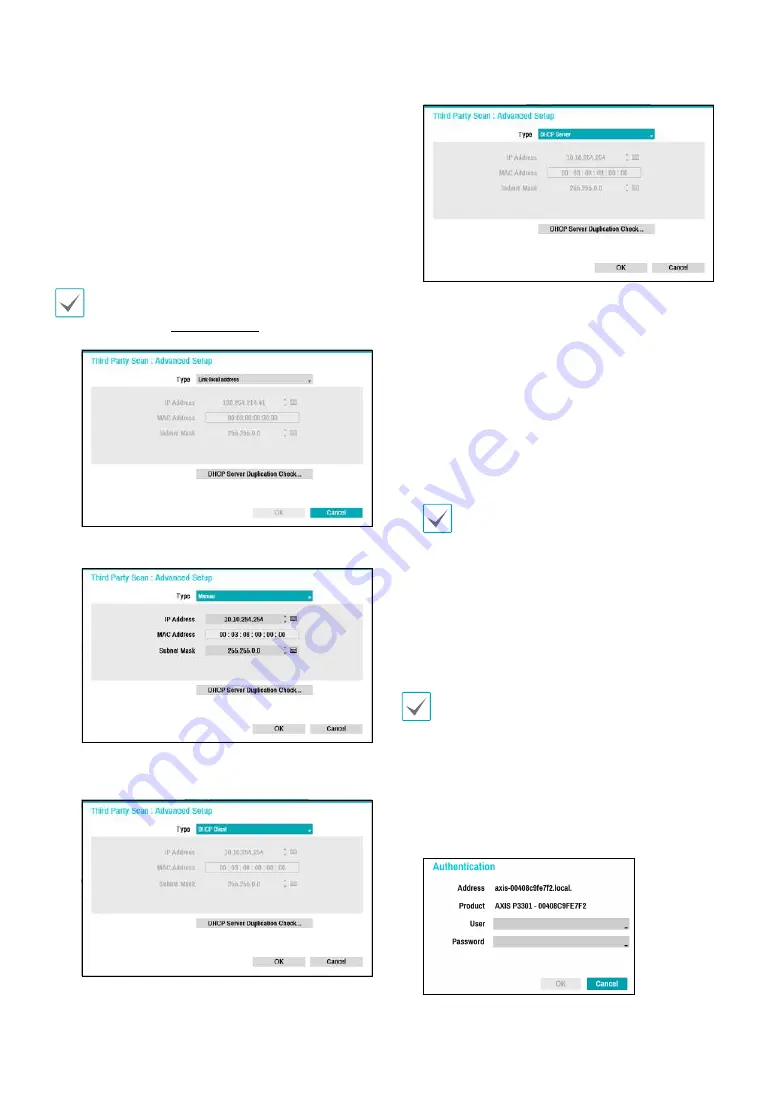
Part 2 - Getting Started
26
Host Configuration Protocol). If the camera is
networked via DHCP, connection to the camera may
not be made properly depending on changes in the
external network environment.
•
Advanced Setup:
If the camera is networked but
not scanned, use this setup. This setup allows you to
change the network setting of the NVR's VIDEO IN
port which is camera's network environment. Check
the camera's network setting first before you use this
setup.
Make sure that this setting does not conflict with
the WAN setting. For more information on the WAN
setting, Refer to
-
Link-local address
: Indicates the default IP address.
-
Manual
: Allows you to enter the IP address and
other network settings manually.
-
DHCP Client
: Retrieves an IP address and other
network settings automatically from a DHCP server.
-
DHCP Server
: It makes the NVR run as a DHCP
server. Check if there is another DHCP server on
the same network. If there is no DHCP server,
this option is enabled. The NVR allocates an IP
address automatically in the range of 10.10.0.128
to 10.10.254.254 by using DHCP to the camera
connected to the NVR's VIDEO IN port. On
DHCP
Server
, Video In Network is connected between
NVR and network cameras only, so Gateway
does not have any meaning.
Subnet Mask
is
255.255.0.0(Class B).
•
When several NVRs exist in the same network,
only one of NVRs has to be run as a DHCP
server. If several DHCP servers are running, the
redundant IP may be allocated to the camera.
•
The range of 10.10.0.1 to 10.10.0.127 is not
recommened because NVR system already has
the IP address.
1
Select
Scan
to commence scanning.
Only cameras that are connected to the NVR via VIDEO
IN ports can be scanned and registered.
2
Select a camera from the scan list and then select
Add Camera
. The device login window will appear.
3
Enter a User ID and a assword for the selected
camera.






























